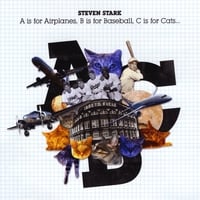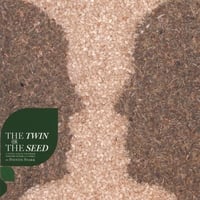The first movement of a classical symphony is almost always in sonata-allegro form. Understanding this form and listening for it enhances one's enjoyment of the piece immensely, just as understanding the form of a sonnet help a reader appreciate a poem.
Here is a an outline of the form with a brief description of each section:
Introduction (optional) - Exposition (repeated) - Development - Recapitulation - Coda
Introduction - Haydn loved slow introductions. They often contained little foreshadowing figures of themes to come, but basically they seem to settle a listener in - like a prelude. Because of its contrast to the rest of the movement, the slow intro also gives the following allegro an added sense of momentum - an explosiveness of joy. Sometimes I think of them like Greek choruses, preparing the audience for what is to come. 11 of the 12 London symphonies have slow introductions at the beginning.
The Exposition contains the main thematic material of the movement. We hear Theme One right off the bat (after the intro) in a Haydn first movement. Theme One is in the main key of the piece. It is usually presented once or twice with some variation, and then a bridge of melodic development eventually takes us into a new key - in a classical symphony, the dominant (the key that is the fifth note up from the main key). Haydn often presents Theme One again in the new key - these works are often called "monothematic" and are quite common in Haydn's mature style. No. 94, the "Surprise" Symphony and No. 104, the "London" Symphony are good examples of monothematic expositions.
Just as often, however, a new melody (Theme Two) is presented in the new key. No. 97 is a good example of a symphony using two Themes (the second is lovely - a waltz-like melody). Most descriptions of sonata-allegro form will show "Theme One and Theme Two", but Haydn's use of the monothematic style shows us that for this developer of the form, key relationship was more important than a thematic difference.
And sometimes Haydn will do both! For instance in No. 100, the "Military" Symphony, we hear Theme One in the original key and in the dominant key, but then another theme is presented in the dominant key as well which figures heavily in the development - our next section.
But before we move on, I must mention that the Exposition in a classical symphony is repeated. This gives the audience a good chance to become familiar with the Themes. If you are learning to follow the form of a symphony, catching the repeat is one of the first things to try to do. Then try to identify the Themes.
The Development is where the composer leads us into the woods. It's the true explorative drama of the piece as the Themes are broken apart, played backwards, turned upside down, sent through a myriad of harmonic centers, and thrown around like a hot potato between the orchestral sections. Finally, after leading us away from home, the Development must lead us back again as it creates a focused tension which must resolve into...
The Recapitulation, which is the return of Theme One in the original key. There is usually no verbatim replaying of the Exposition. You will hear the same ideas, including the bridge materials most likely, but they may be treated a bit differently. And this time the bridge material will not lead us into the dominant key. We will stay in the main key for Theme Two as the piece establishes an overall harmonic resolution. We see again that key relationship is the main drama of classical sonata-allegro form.
The Coda is extra material at the end to add extra affirmation to the home key.
And there is a summary of sonata allegro from.
Now, using the London Philharmonic recording with Eugene Jochum conducting, I will give the specific time points where these different sections begin in Haydn's Symphony No. 97 in C Major.
Intro: 0:00 - this is a relatively short intro by Haydn' standards. It definitely features some foreshadowing of things to come!
Exposition/Theme One: 1:12 - so explosive!
Theme Two: 2:26 - so beautiful!
Exposition Repeat/ Theme One: 3:06
Theme Two: 4:20
Development: 4:59 - Can you pick out the different pieces of the themes he uses? He focuses mainly on Theme One, but there are some quicker violin passages which sound like the ascending short notes in Theme Two. There's probably many other references, including bridge material, that I have not found yet.
Recapitulation/Theme One: 6:10 - It doesn't take long to depart from the Exposition.
Theme Two: 7:07 - Ah, still beautiful!
Coda: 8:24 - It starts like Theme One, but quickly reinforces C Major to the end.
And there is another Haydn masterpiece. Nine minutes goes by pretty quickly when one knows the form and can admire Haydn's concise, clear execution.
By the way, the Cleveland Orchestra under George Szell is another great recording and very different in style. I prefer the Jochum because of the general level of gusto, but the Szell has wonderful clarity.
I will be back soon with the rest of my London Symphonies list. And then I will be back again with a more thorough evaluation, which I expect will change the list quite a bit!


